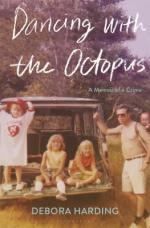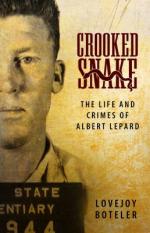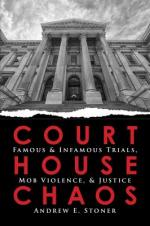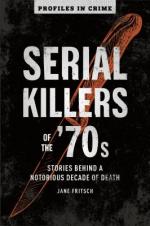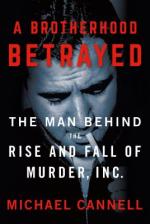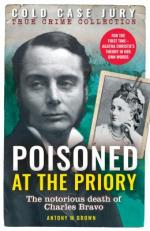September 1, 2020 | kasarak
So the summer heat might be subsiding, but the crime waves in the books below are not. Stay current on the new true crime titles found in the library's non-fiction 360's.
One Omaha winter day in November 1978, when Debora Harding was just fourteen, she was abducted at knifepoint from a church parking lot. She was thrown into a van, assaulted, held for ransom, and then left to die as an ice storm descended over the city.
Debora survived. She identified her attacker to the police and then returned to her teenage life in a dysfunctional home where she was expected to simply move on. Denial became the family coping strategy offered by her fun-loving, conflicted father and her cruelly resentful mother.
It wasn't until decades later - when beset by the symptoms of PTSD- that Debora undertook a radical project: she met her childhood attacker face-to-face in prison and began to reconsider and reimagine his complex story. This was a quest for the truth that would threaten the lie at the heart of her family and with it the sacred bond that once saved her.
Dexterously shifting between the past and present, Debora Harding untangles the incident of her kidnapping and escape from unexpected angles, offering a vivid, intimate portrait of one family's disintegration in the 1970s Midwest.
Written with dark humor and the pacing of a thriller, Dancing with the Octopus is a literary tour de force and a groundbreaking narrative of reckoning, recovery, and the inexhaustible strength it takes to survive.
In 1968, during Albert Lepard?s fifth escape from a life sentence at Parchman Penitentiary, he kidnapped Lovejoy Boteler, then eighteen years old, from his family?s farm in Grenada, Mississippi. Three decades later, still beset by half-buried memories of that time, Boteler began researching his kidnapper?s nefarious, sordid life to discover how and why this terrifying abduction occurred.
Crooked Snake: The Life and Crimes of Albert Lepard is the true story of Lepard, sentenced to life in Parchman for the murder of seventy-four-year-old Mary Young in 1959. During the course of his sentence, Lepard escaped from prison six times in fourteen years.
In Crooked Snake, Boteler pieces together the story of this cold-blooded murderer's life using both historical records and personal interviews?over seventy in all?with ex-convicts who gravitated to and ran with Lepard, the family members who fed and sheltered the fugitive during his escapes, the law officers who hunted him, and the regular folks who were victimized in his terrible wake.
Throughout Crooked Snake, Boteler reveals his kidnapper?s hardscrabble childhood and tracks his whereabouts before his incarceration and during his jailbreaks. Lepard?s escapes take him to Florida, Michigan, Kansas, California, and Mexico. Crooked Snake captures a slice of history and a landscape that is fast disappearing. These vignettes describe Mississippi?s countryside and spirit, ranging from sharecropper family gatherings in Attala County?s Seneasha Valley to the twenty-thousand-acre Parchman farm and its borderlands teeming with alligator, panther, bear, and wild boar.
In cities all across the United States, the courthouse represents justice, safety, and the rule of law. However, in some cities it becomes much more, becoming the home of tragic occasions of mob violence and becoming nationally known through famous or infamous trials.
Courthouse Chaos covers the most notable of these cases in detail, offering true crime lovers their money's worth in local stories, well-researched facts, cutting insight, and unbiased conclusions.
From Ted Bundy to John Wayne Gacy and David Berkowitz, the 1970s were a time of notorious and brutal serial killers. Find out more about them, along with some you may never have heard of.
The Co-Ed Killer, Son of Sam, Hillside Strangler, and Dating Game Killer--in many ways, terrifying serial killers were as synonymous with the 1970s as Watergate, disco, and the oil crisis. This fascinating collection of profiles presents the most notorious as well as lesser-known serial murderers of that decade. Beyond Ted Bundy and David Berkowitz, it includes more obscure killers like Coral Eugene Watts, known as "The Sunday Morning Slasher," who killed 80 women; Edmund Kemper, the "Co-Ed Killer"; and Rodney Alcala, who is believed to have killed between 50 and 130 people between 1971-1979.
In the fall of 1941, a momentous trial was underway that threatened to end the careers and lives of New York's most brutal mob kingpins. The lead witness, Abe Reles, had been a trusted executioner for Murder, Inc., the enforcement arm of a coast-to-coast mob network known as the Commission. But the man responsible for coolly silencing hundreds of informants was about to become the most talkative snitch of all. In exchange for police protection, Reles was prepared to rat out his murderous friends, from Albert Anastasia to Bugsy Siegel--but before he could testify, his shattered body was discovered on a rooftop outside his heavily-guarded hotel room. Was it a botched escape, or punishment for betraying the loyalty of the country's most powerful mobsters?
Michael Cannell's A Brotherhood Betrayed traces the history of Murder, Inc. through Reles' rise from street punk to murder chieftain to stool pigeon, ending with his fateful death on a Coney Island rooftop. It resurrects a time when crime became organized crime: a world of money and power, depravity and corruption, street corner ambushes and elaborately choreographed hits by wise-cracking foot soldiers with names like Buggsy Goldstein and Tick Tock Tannenbaum.
For a brief moment before World War II erupted, America fixated on the delicate balance of trust and betrayal on the Brooklyn streets. This is the story of the one man who tipped the balance.
London, 1876: When newlywed barrister Charles Bravo ingests a rare poison, the evidence suggests suicide. But in one of the most infamous inquests of all time, a coroner finds it to be an unlawful murder. So what really happened that day? The fourth book in Antony M. Brown's popular Cold Case Jury series picks apart the notorious case that gripped Victorian Britain--and continues to spark debate to this day. Why did Bravo refuse any help, even when going through excruciating pain? Was his wife, with her scandalous past, to blame? Perhaps it was her ex-lover, jealous of her newfound happiness--or another sinister, unseen hand? In Poisoned at the Priory, Brown compiles the evidence and creates dramatic reconstructions of four main theories on how Charles Bravo may have died. What will your verdict be?
